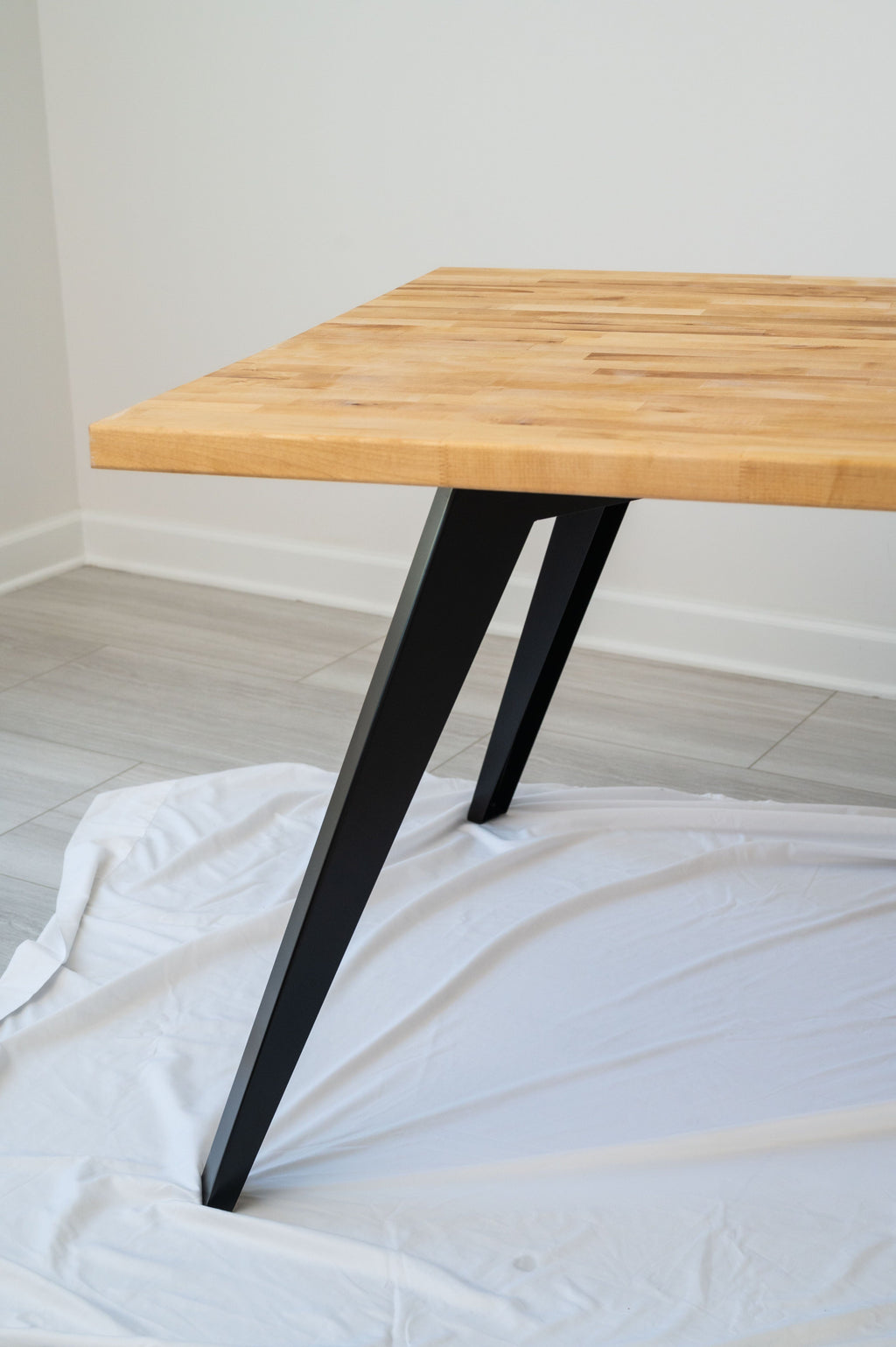Improve Your Dining Experience with Classic Dining Table Legs Wood
Improve Your Dining Experience with Classic Dining Table Legs Wood
Blog Article
Key Elements to Remember for Dining Table Legs Wood Choices
When picking timber for dining table legs, a number of crucial factors call for cautious consideration to ensure both capability and visual allure. The option of wood type, identified by its sturdiness and special grain patterns, plays an essential duty in the general design and long life of the item.
Timber Types and Qualities
When selecting timber for dining table legs, it is vital to recognize the special characteristics of various wood kinds. Different woods provide distinct advantages and negative aspects, affecting both the durability and aesthetic charm of the completed product.
Oak, recognized for its remarkable resilience, also features a prominent grain that can add personality to the table. Cherry wood, with its rich color that strengthens over time, provides an elegant appearance however might require more upkeep to stop scrapes.
On the various other hand, softwoods like yearn and fir are a lot more budget friendly and less complicated to deal with, yet they are much less sturdy than woods. Pine is lightweight and includes a cozy, rustic appearance, making it a popular choice for informal eating settings. Nevertheless, it is a lot more susceptible to dents and scrapes.
Understanding these qualities will certainly help in making an informed decision to make certain the legs of the table fulfill both visual and practical requirements.
Grain Patterns and Aesthetics
The timber's grain is not merely an aesthetic attribute; it conveys a distinct character and charm to each item. Different timber types show unique grain patterns, ranging from the straight lines of maple to the complex swirls of oak and the striking figure of walnut.
Furthermore, the orientation and scale of the grain can influence the regarded size and elegance of the table. Bigger, much more pronounced grains might lend a vibrant, dramatic effect, while finer, subtler grains can create a fine-tuned, understated look. Furthermore, the completing process can additionally improve these patterns, highlighting the natural appeal of the wood and highlighting abundant hues.
Eventually, the choice of grain pattern should harmonize with various other design aspects, such as the tabletop and surrounding furnishings, guaranteeing a cohesive visual that raises the dining experience. Thoughtful option of wood grain not just adds to the table's appeal yet also shows the proprietor's taste and design.
Resilience and Toughness
The toughness and toughness of dining table legs are extremely important factors to consider for guaranteeing long life and security in any type of dining area. Picking the best timber is crucial, as different varieties display varying levels of strength.

Inevitably, investing in premium timber and robust building and construction methods will certainly yield a table that stands the test of time, while supplying a trustworthy structure for numerous meals shared among friends and family. Prioritizing sturdiness and stamina makes certain that your dining table stays functional and cosmetically pleasing for years ahead.
Upkeep and Treatment
Proper upkeep and care are essential for preserving the sturdiness and toughness of eating table legs made from timber. Normal cleansing is crucial; utilizing a soft, damp towel makes certain that dirt and particles do not accumulate, which can bring about scratches and dullness. It is suggested to stay clear of rough chemicals or abrasive products that i thought about this could harm the surface.
In addition, using an appropriate timber polish or wax periodically can aid preserve the sheen and safeguard the wood from moisture and spills. It is essential to comply with the supplier's referrals concerning the type of item to make use of, as particular finishes might respond negatively to certain chemicals.
Humidity and temperature level variations can likewise influence wood table legs, creating them to warp or crack. It's best to position the table far from direct sunshine and warm sources. If the table legs have any kind of damages or scrapes, attending to these promptly can prevent more damage.
Finally, periodically inspecting the joints and screws for rigidity is essential to keep architectural stability (Dining Table Legs Wood). By adhering to these maintenance methods, home owners can guarantee their wood table legs stay functional and enticing for several years to come
Environmental Factors To Consider
When choosing wood for dining table legs, it's crucial to take environmental factors to consider right into account. The sourcing and sustainability of wood are vital in minimizing ecological influence. Choosing wood from certified resources, such as those backed by the Forest Stewardship Council (FSC), guarantees that the lumber is collected properly, promoting woodland conservation and biodiversity.

Furthermore, neighborhood sourcing of wood minimizes transportation discharges, sustaining local economic climates while decreasing ecological influence. It Look At This is also recommended to be knowledgeable about the wood's therapy and ending up processes, as specific chemicals can be harmful to both human health and wellness and the setting. By focusing on sustainable timber selections, consumers can add to environmental conservation while enjoying the longevity and beauty of their table legs.
Final Thought
In conclusion, choosing wood for eating table legs demands careful consideration of numerous elements, including timber types, grain patterns, and durability. Upkeep needs and ecological sustainability additional impact wood choices, stressing the importance of sourcing from licensed or recovered materials.
When selecting timber for dining table legs, numerous essential published here variables call for cautious consideration to make certain both performance and aesthetic allure.Proper upkeep and treatment are important for maintaining the longevity and strength of dining table legs made from wood.When choosing wood for eating table legs, it's important to take environmental factors to consider right into account. By prioritizing lasting timber selections, customers can contribute to environmental preservation while taking pleasure in the toughness and elegance of their dining table legs.
In verdict, picking wood for eating table legs requires mindful consideration of numerous aspects, including wood types, grain patterns, and resilience. Dining Table Legs Wood.
Report this page